
But they tend not to be as easy to keep as pets.
Not only do they need the opportunity to climb, but most are also more standoffish.
And some species can be aggressive, especially if the snake was wild-caught.
But there are some arboreal snake species that make good pets.
Keep reading for a list of tree-dwelling snakes that can make good pets. Do note that some are better for experiences snake keepers. We’ll make sure to note which species are suitable for beginners.
Table of Contents
- 1 Arboreal Snakes That Make The Best Pets
- 1.1 Carpet Python (Morelia Spilota)
- 1.2 Emerald Tree Boa (Corallus Caninus)
- 1.3 Amazon Tree Boa (Corallus hortulana)
- 1.4 Spotted Python (Antaresia Masculosa)
- 1.5 Reticulated Python (Malayopython Reticulatus)
- 1.6 Children’s Python (Antaresia Childreni)
- 1.7 Gopher Snake (Pituophis catenifer)
- 1.8 Japanese Rat Snake (Elaphe Climacophora)
- 1.9 Brazilian Rainbow Boa (Epicrates Cenchria)
- 1.10 Rough Green Snake (Opheodrys Aestivus)
- 2 Best Arboreal Snakes Pet Snakes: Final Thoughts
Arboreal Snakes That Make The Best Pets
The following arboreal snake species can all make good pets. however, as mentioned, some of them are more suitable to those with some previous snake-keeping experience.
Carpet Python (Morelia Spilota)
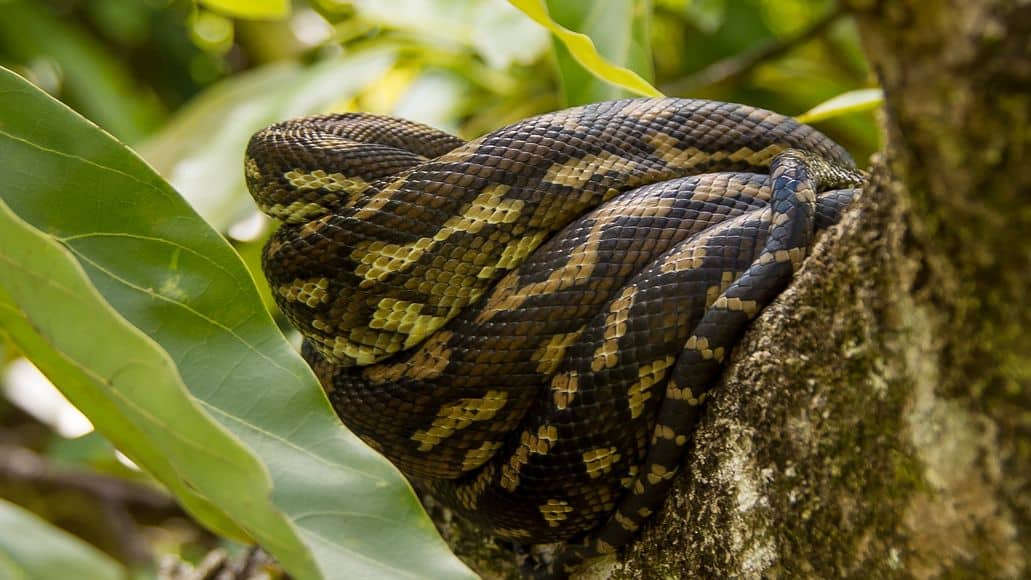
Carpet pythons, or carpet snakes, are Australian arboreal snakes that are low maintenance, docile, and fairly easy to care for. These moderately-large pythons also leas of an odor than most other pet reptiles.
Most varieties of carpet pythons grow up to 2 to 3 feet in length, with some, like jungle carpet pythons, growing to 6 to 8 feet.
Carpets, as they are fondly known, require feeding just once a week. They are open to being handled. But note that they have fangs and could bite, so wear gloves when handling this species.
In the wild, carpet pythons eat small birds, rodents, and lizards. They have a long lifespan of 15 to 20 years and in captivity, they could live for over 30 years.
Emerald Tree Boa (Corallus Caninus)
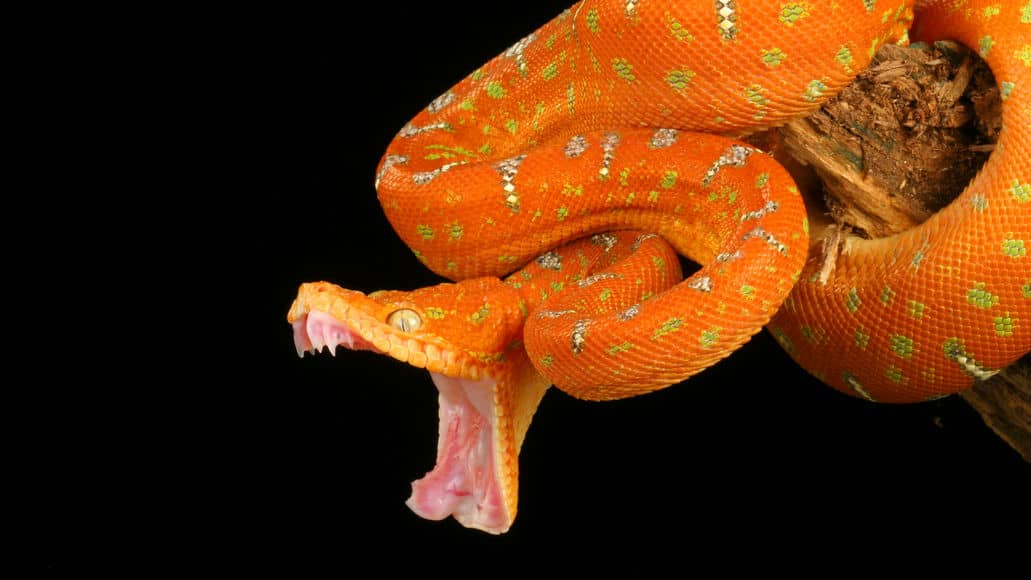
If you want a gorgeous snake to impress your guests, then the emerald tree boa is a wonderful choice.
But one word of caution: these beautiful green South American natives are not too open to being handled, so it is best to only hold this snake for a short duration.
As an arboreal species, they prefer spending most of their time perched on, or coiled around, a tree branch. You can move the entire branch or perch when you want to show your boa off to your friends.
Emerald tree boas are nonvenomous, but they have sharp teeth and their bites are painful. They grow up to a length of around 6 feet, so they are generally better suited for more experienced snake-keepers.
In captivity, emerald tree boas eat small rodents. In the wild, they prefer birds. Most live for 15 to 20 years with proper husbandry.
Amazon Tree Boa (Corallus hortulana)
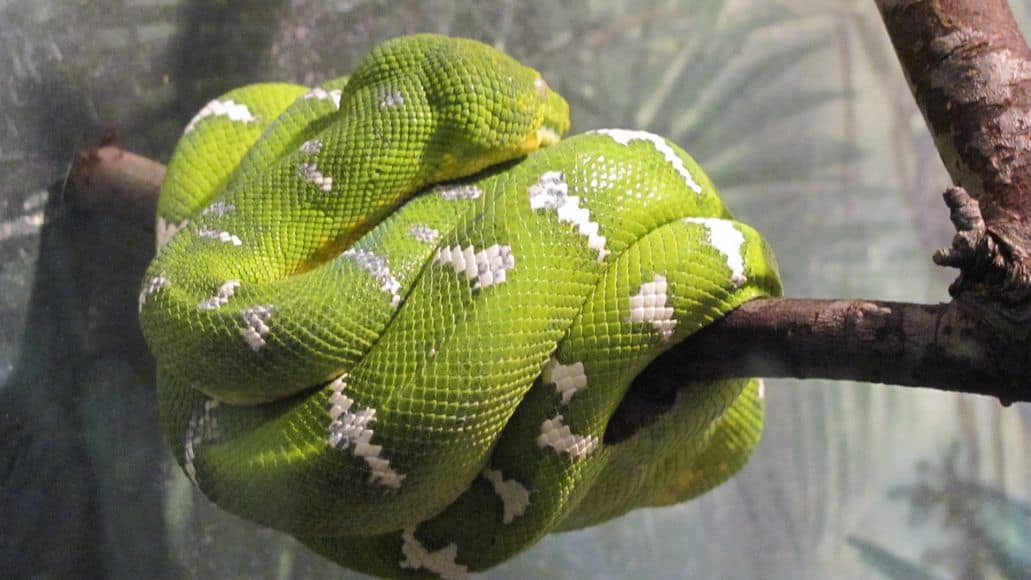
The Amazon tree boa is known by various names, like the common tree boa, garden tree boa, and even macabrel. The South American native is completely arboreal and spends most of its time in the branches.
They are slender-bodied, but large, snakes, measuring about 5 to 7 feet long. You can find them in colors like yellow, green, tan, grey, black, or red.
Captive-bred Amazon tree boas make good pets, but the wild-caught ones are snappy and aggressive. Taming an ‘Ammie’ isn’t impossible but can be quite challenging, due to its feeding response.
Daily handling from a young age could prevent some of this aggression. Amazon tree boas are nonvenomous, but their bites can be painful.
Spotted Python (Antaresia Masculosa)
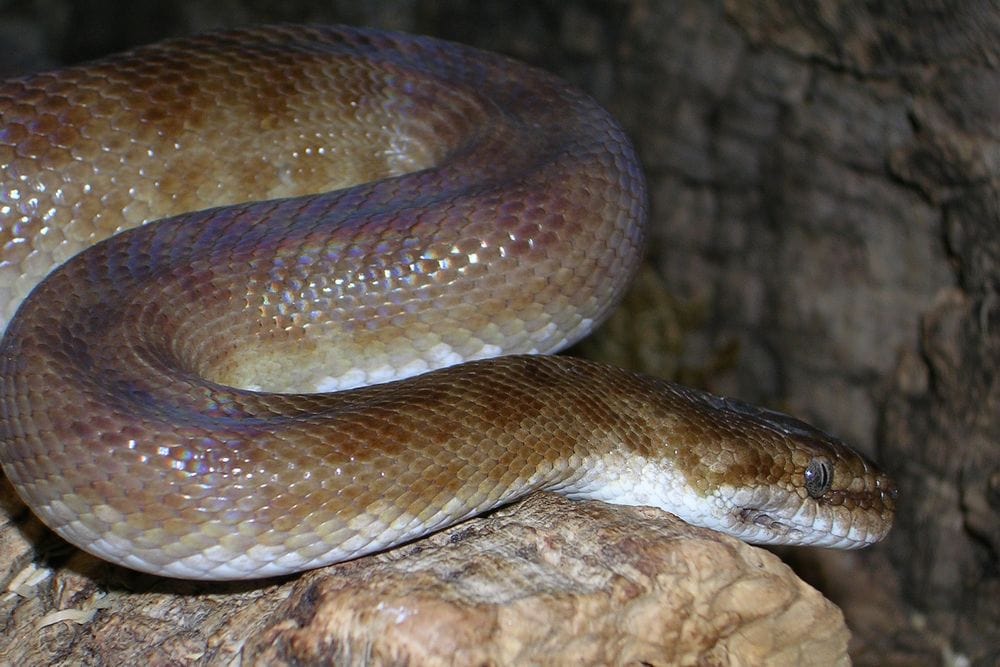
Spotted pythons are semi-arboreal snakes with brown coloring and distinct dark brown spots all over their bodies. They are thin-bodied snakes that grow up to 4 feet in length.
Spotted pythons make excellent first-time pets due to their docile nature, small size, and low maintenance needs. Adult spotted pythons tend to eat once every two weeks. They are usually not aggressive and only bite when they feel threatened.
The habitat you provide for your spotted python must have several climbing structures, as well as adequate floor space.
Reticulated Python (Malayopython Reticulatus)
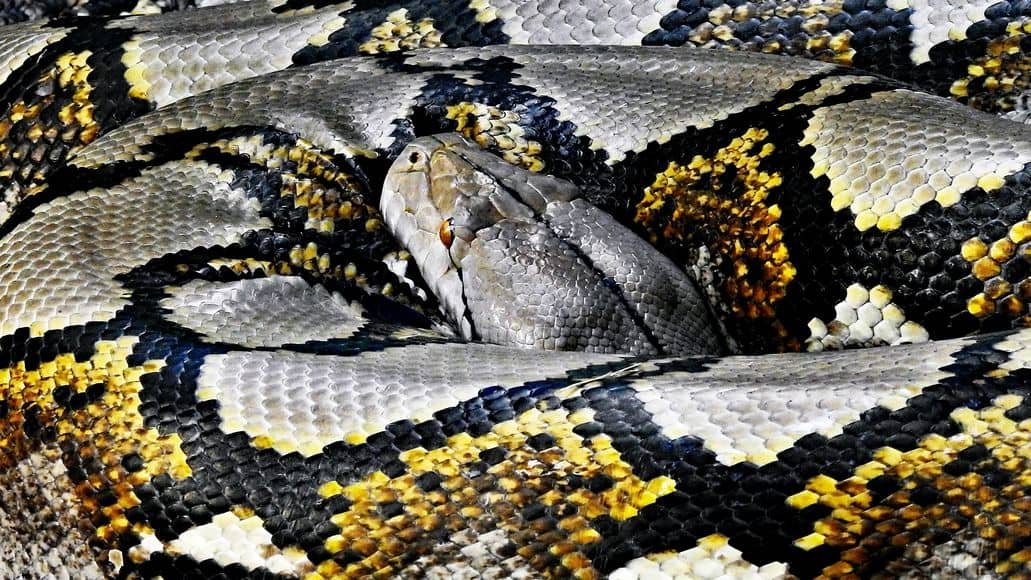
Reticulated pythons are arboreal snakes native to Asia. They do have a reputation for being aggressive, but captive-bred and captive-raised ones are fairly docile and open to handling.
While reticulated pythons (or “retics”, as they are fondly known) make unique pets, their large size and aggressive temperaments mean that they are not good for beginners to snake-keeping. Only experienced herpetologists and snake hobbyists should handle one. A retic bite is no laughing matter!
These light-colored pythons can have white, tan, light-brown, yellow and red scales with blotchy patterns. They can weigh between 2 and 150 pounds (1 to 75 kilos!
Children’s Python (Antaresia Childreni)
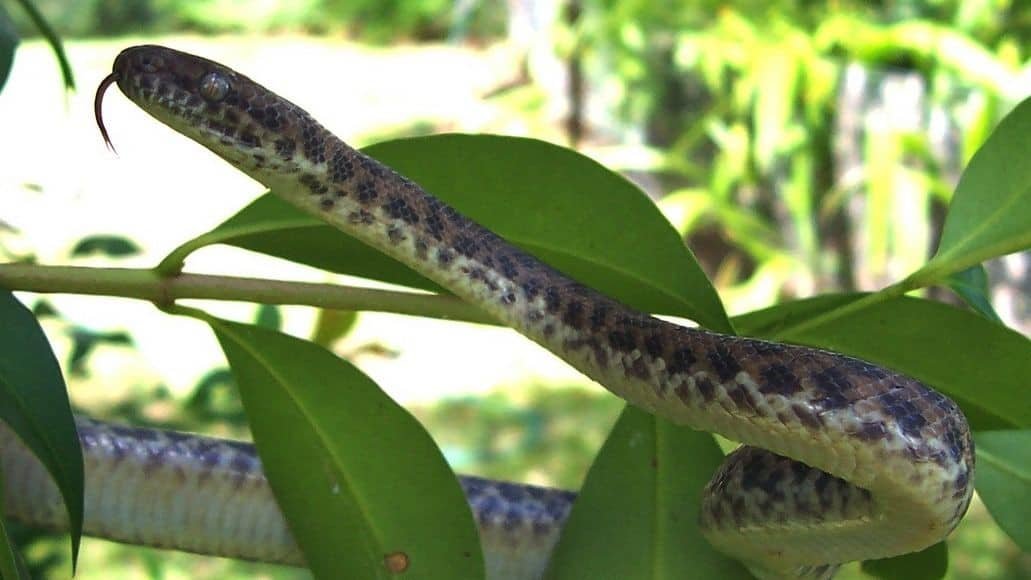
Named after John George Children, the Children’s Python is a semi-arboreal snake native to Australia. They can easily climb trees to eat birds and bird eggs.
Children’s pythons are wonderful to keep as pets, because they are low-maintenance and docile. Their small size (they are only about one meter long) also makes them easy to handle.
Note that, like most snake species, children’s pythons do not like being handled for prolonged periods, so keep handling to a minimum and instruct kids about that as well.
In captivity with proper husbandry, children’s pythons can live for 15 to 20 years.
Gopher Snake (Pituophis catenifer)
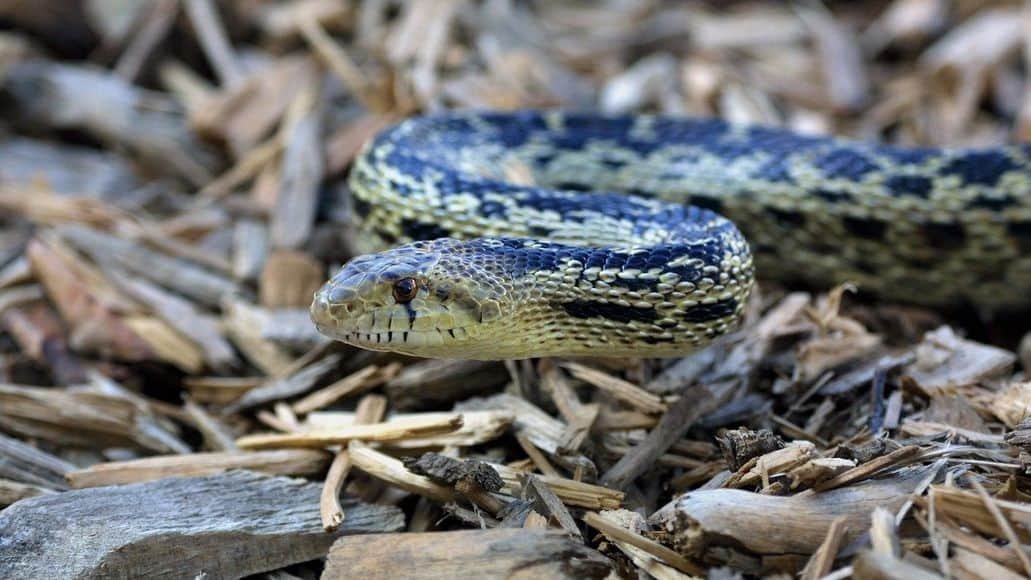
Gopher snakes are gentle, polite, and docile snakes that make excellent pets. Some species of gophers are semi-arboreal while others are ground-dwelling and fossorial.
Most gopher species reach lengths of over 9 feet. They are large, heavy-bodied snakes that are best handled by experts. Captive-bred gophers are fairly happy to be handled, but you must be gentle when holding your pet.
Gophers are good snakes to have in the backyard or on a farm, because they control rodent and pest populations. However, they tend to mimic rattlesnakes, which is why, unfortunately, they often get killed.
Japanese Rat Snake (Elaphe Climacophora)
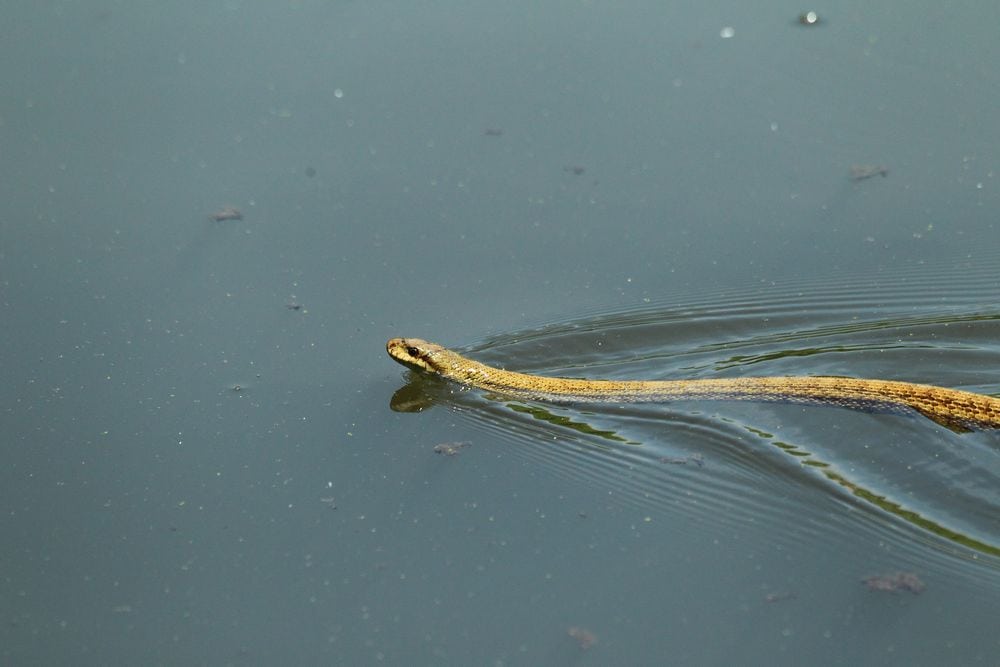
The Japanese rat snake is a docile, semi-arboreal snake found around the islands of Japan. Adults reach a length of around 5 feet. These snakes have beautiful colors ranging from pale-yellow green to dark blue-green. In the wild, Japanese rat snakes climb trees to rest or raid bird nests.
Japanese rat snakes are low-maintenance and not too fussy. They tend to eat every 7 to 10 days in captivity and prefer a diet of thawed frozen mice or rats. Japanese rat snakes are healthy, hardy snakes and they make excellent companion pets for beginning snake-keepers.
Brazilian Rainbow Boa (Epicrates Cenchria)
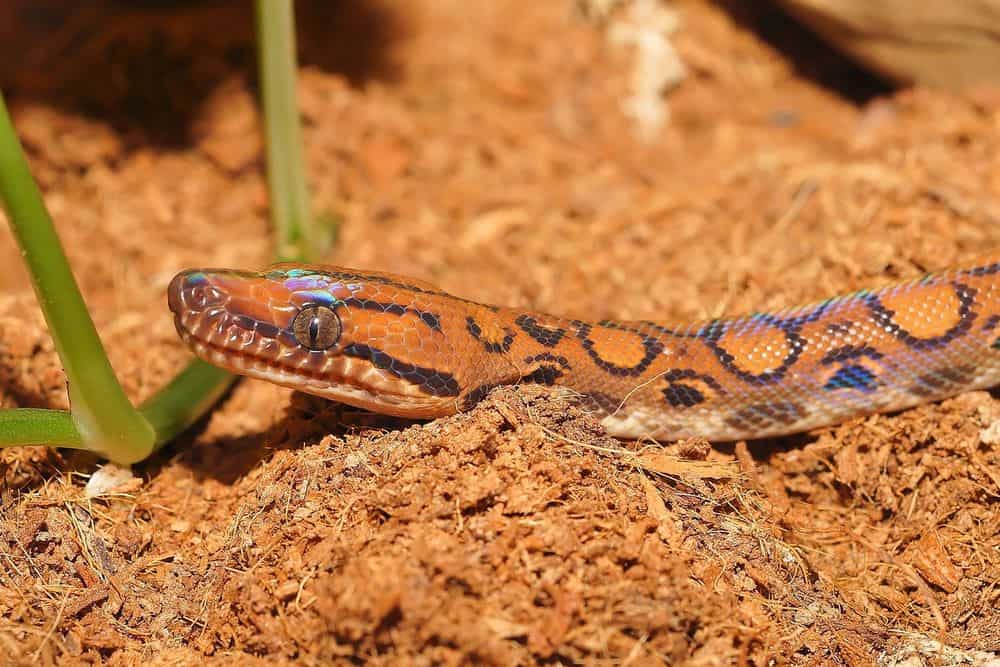
Brazilian rainbow boas are stunning snakes that grow up to between 3.5 and 6 feet in length. They have maroon or light-red colored bodies with beautiful patterns with dark borders.
These semi-arboreal snakes are excellent pets for intermediate and highly experienced snake keepers. While they are mostly shy and don’t mind being handled, some tend to get aggressive when they feel threatened.
Provide plenty of vertical space and maintain optimum humidity and temperature. With good care, the Brazilian rainbow boa can live for almost 30 years.
Rough Green Snake (Opheodrys Aestivus)
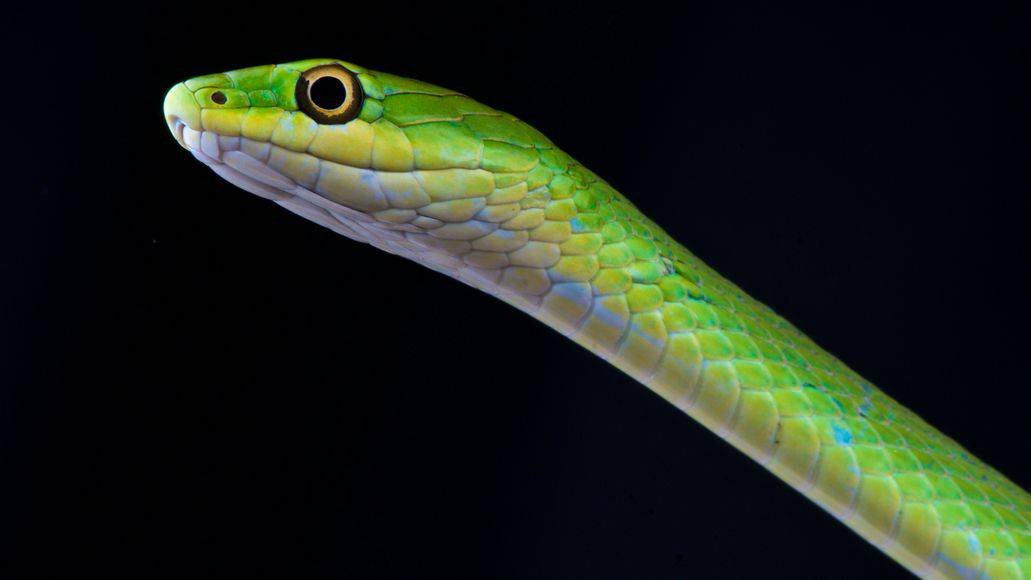
Rough green snakes are slender, bright green snakes that are arboreal. They grow to between 22 and 33 inches long. In the wild, they climb trees in search of spiders, insects, and other invertebrates.
Rough green snakes are timid, shy snakes. They tend to get stressed when handled. If you plan to keep one as a pet, you should only look at it and not hold it (other than when removing it for cleaning the enclosure or taking it to the vet).
It is also important to buy a captive-bred rough green snake instead of bringing home a wild-caught one. With good husbandry, rough green snakes can live for 15 years.
Best Arboreal Snakes Pet Snakes: Final Thoughts
There are a few species of arboreal snakes that make wonderful pets, even for first-time snake keepers. But not all of the 10 snakes listed above are good for beginners.
Some of them can make for good pets, but only for someone who already has experience keeping snakes. If you have never had a snake before, I recommend you start with one of the more docile and beginner-friendly species, like the Children’s python or the spotted python.
Leave a Reply